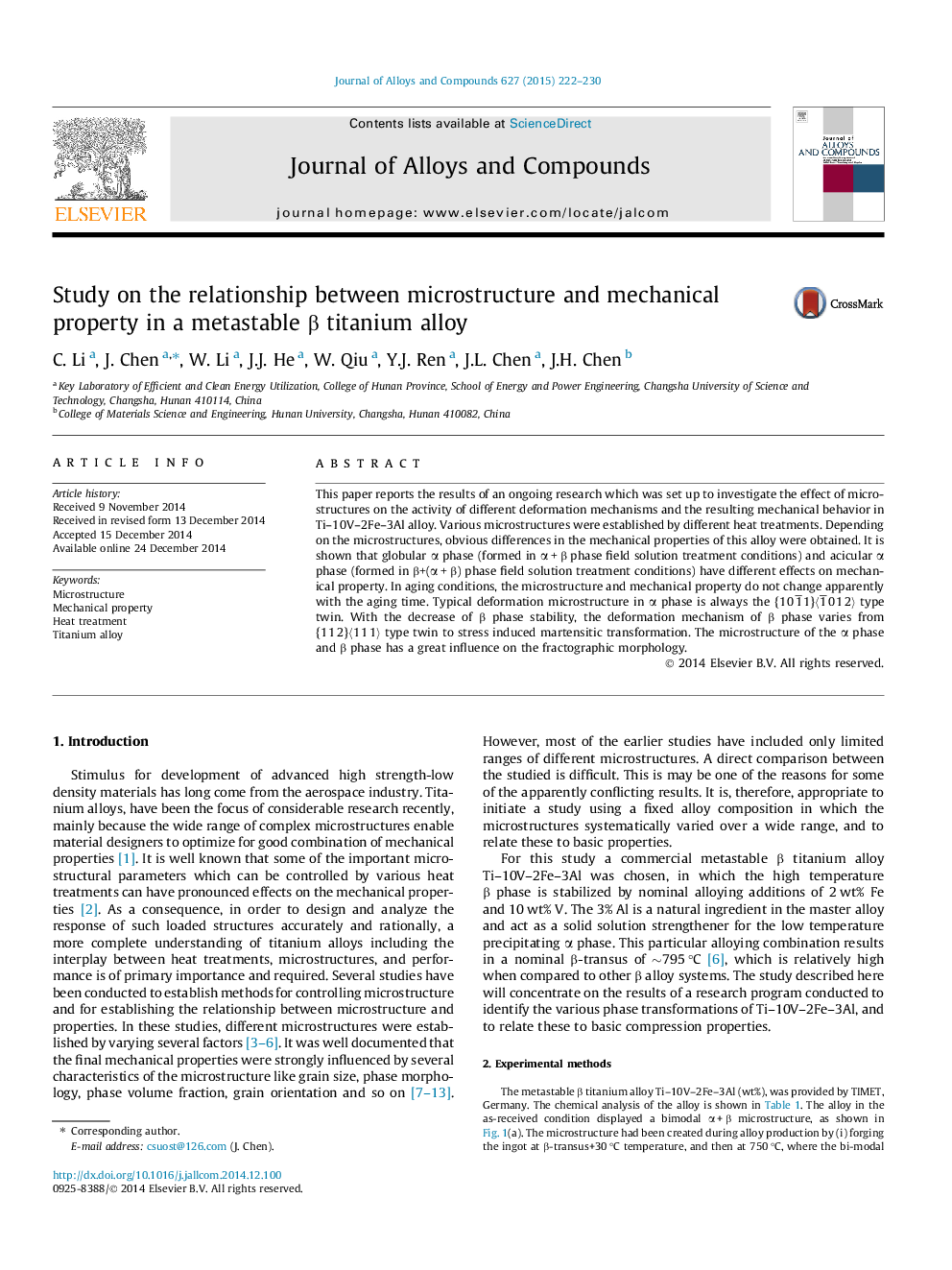| Article ID | Journal | Published Year | Pages | File Type |
|---|---|---|---|---|
| 1610002 | Journal of Alloys and Compounds | 2015 | 9 Pages |
Abstract
This paper reports the results of an ongoing research which was set up to investigate the effect of microstructures on the activity of different deformation mechanisms and the resulting mechanical behavior in Ti-10V-2Fe-3Al alloy. Various microstructures were established by different heat treatments. Depending on the microstructures, obvious differences in the mechanical properties of this alloy were obtained. It is shown that globular α phase (formed in α + β phase field solution treatment conditions) and acicular α phase (formed in β+(α + β) phase field solution treatment conditions) have different effects on mechanical property. In aging conditions, the microstructure and mechanical property do not change apparently with the aging time. Typical deformation microstructure in α phase is always the {1 0 1â¾Â 1}ã1â¾Â 0 1 2ã type twin. With the decrease of β phase stability, the deformation mechanism of β phase varies from {1 1 2}ã1 1 1ã type twin to stress induced martensitic transformation. The microstructure of the α phase and β phase has a great influence on the fractographic morphology.
Related Topics
Physical Sciences and Engineering
Materials Science
Metals and Alloys
Authors
C. Li, J. Chen, W. Li, J.J. He, W. Qiu, Y.J. Ren, J.L. Chen, J.H. Chen,
